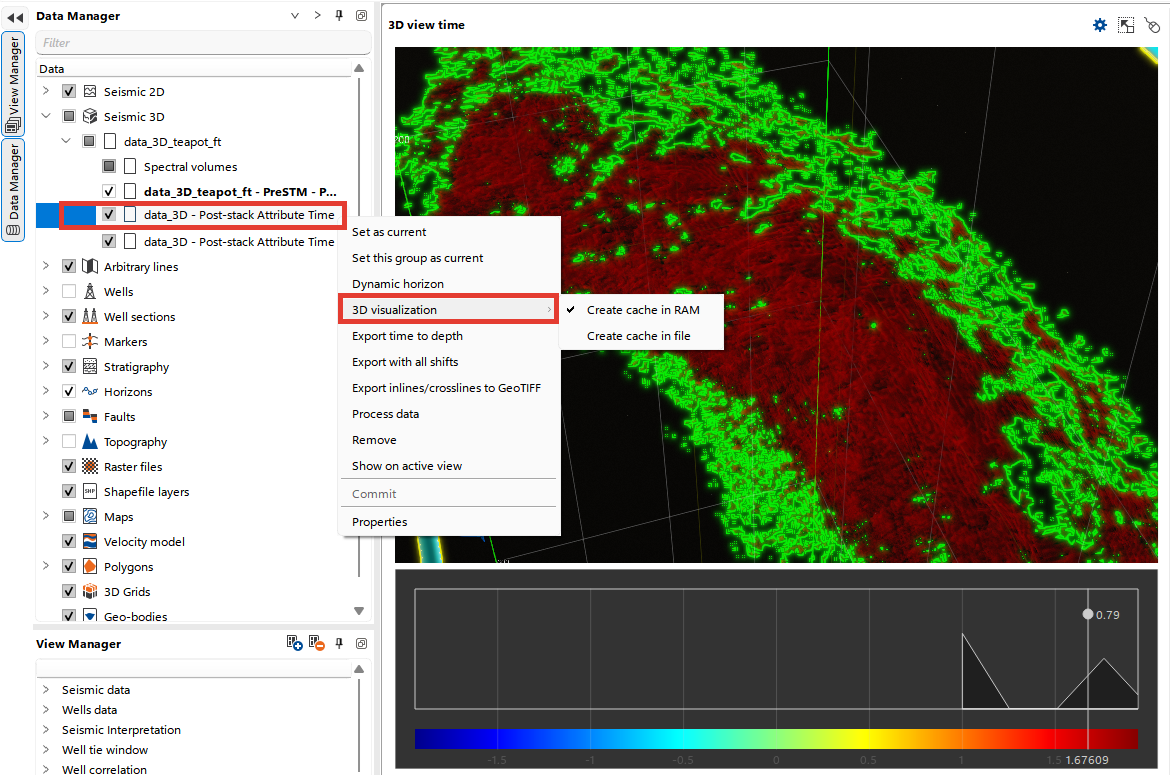In g-Space, seismic attributes are tools that extract additional insights from seismic data, offering detailed information about the subsurface.
Seismic attributes can be computed on 2D and 3D data, providing flexibility for seismic volume analysis, horizon interpretation, and fault detection. The attribute settings are configured in the Attributes bar.
First, it's important to note that g-Space offers two methods for calculating attributes: a quick On-fly calculation and a more comprehensive full Calculate attributes for seismic volumes, including spectral decomposition.
How to Generate On-fly calculation Seismic Attributes
1.Click on the Attributes icon in the toolbar.
2.Set the time window if applicable to the attribute.
3.Select the seismic attributes you wish to calculate from the drop-down list. You can choose one or multiple attributes simultaneously.
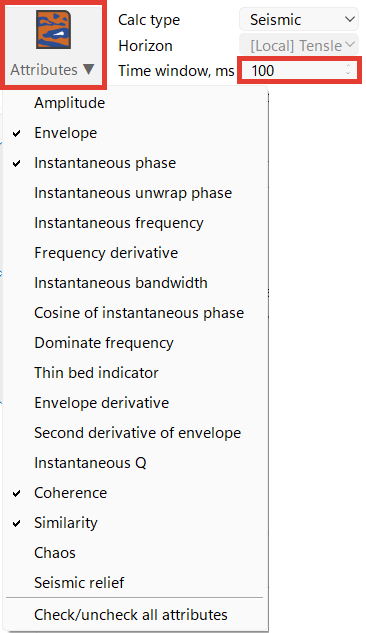
The process takes seconds, the progress can be seen on the right side in the Progress View.

The calculated attribute will be accessible in any seismic view. In the example below, it is shown in the Crossline view. In the View Properties panel, users can select one or multiple attributes to display, customize the color palette, adjust transparency, and modify other visualization settings.

How to Generate Volume based Seismic Attributes
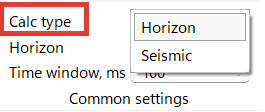
First, navigate to the Attributes bar and, in the Common Settings tab, select the calculation type — Horizon or Seismic. Then, go to the Execute tab and click Calculate Attributes. A pop-up window will appear, where you can choose seismic data and attributes for calculation.
There are two options — extract attribute along horizon or using a window.
For Extract along horizon, the user simply selects a horizon from the drop-down menu.

The Window option allows users to calculate seismic attributes over a specified time window relative to a selected horizon or time interval.
There are three options available:
Between time: attributes are calculated over a specific time interval. Users can specify the start and end times (in milliseconds) within the seismic data.
Between horizons: the option calculates attributes between two selected horizons. Users can choose the start and end horizons from the drop-down menus.
Single horizon: the option to calculate attributes around a single horizon. Users can select the desired horizon from the drop-down menu. The Window (in milliseconds) determines the time range used to calculate the attributes. The window can be positioned Above, Below, or Centered (with the horizon in the middle, equally above and below) for attribute calculation.
Users can select different statistical operations such as Interval average, RMS value, Maximum, Minimum, Average positive/negative value, or Most common value to be applied within the specified window.
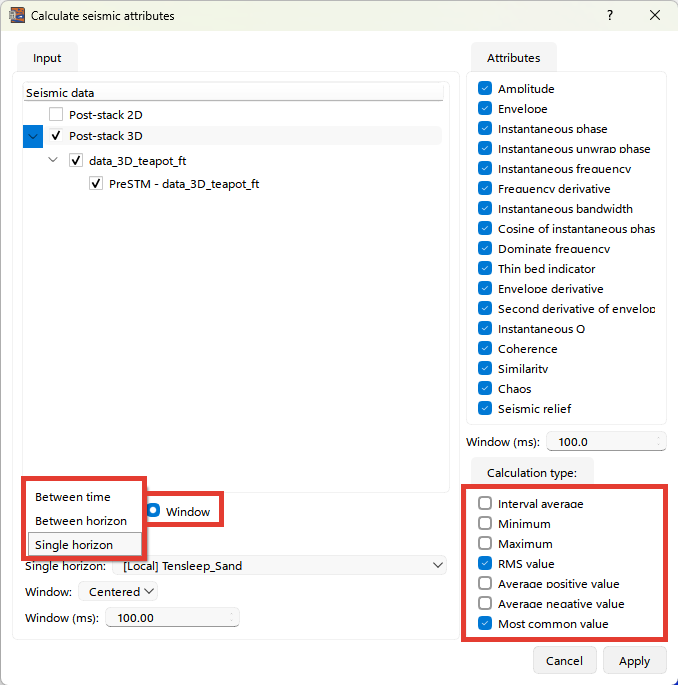
For the Seismic calculation type, users can either calculate the entire attribute volume or define specific limits. You can set a time limit interval or choose the horizon limit option, where the attribute volume will be calculated between two horizons. Next, set the vertical step for the volume and click Apply. You can monitor the calculation process in the Progress View.
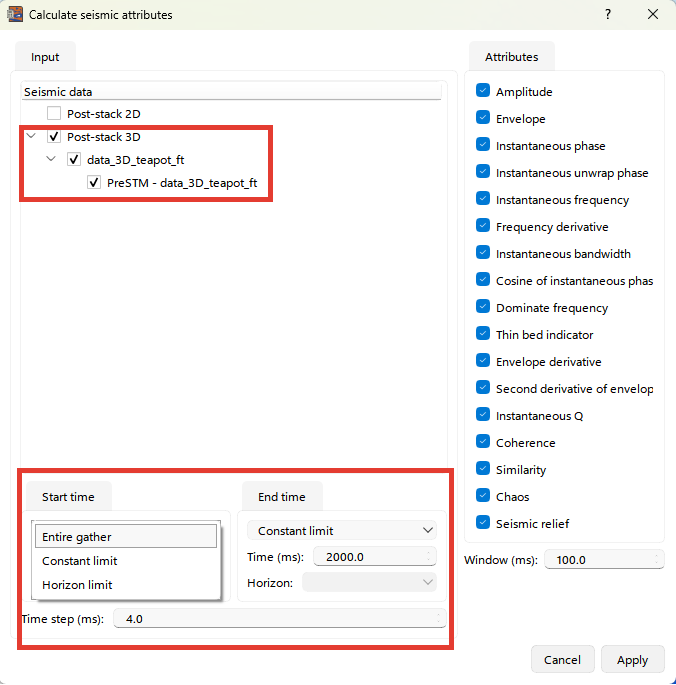
View Attributes:
To view the attributes, user should go to Maps section in the Data Manager. Expand the Maps section and click the Attributes section.
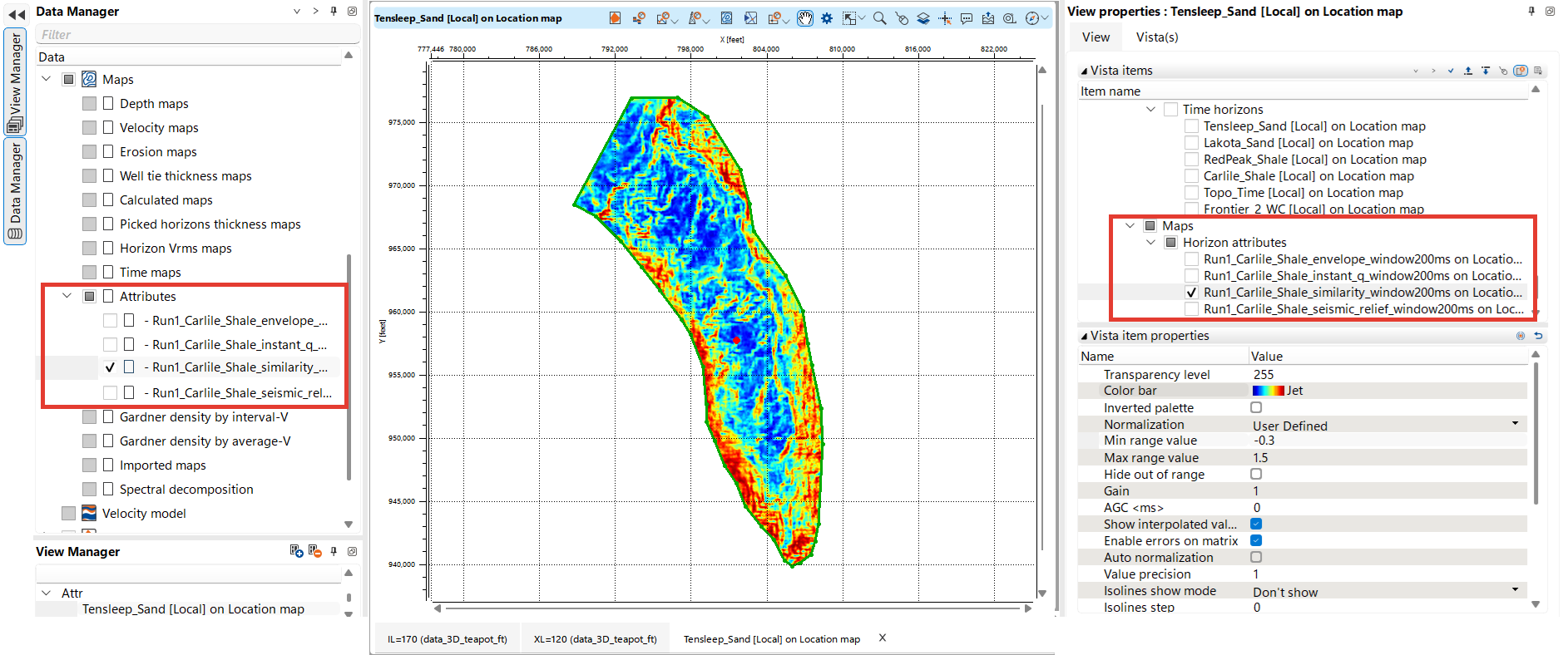
All the calculated attributes should be visible on the Location map.
The user can visualize the calculated attribute volumes as any 3D seismic data. To do this, you need to create a cache in RAM or in a file by right-clicking on the calculated attribute volume in the Data Manager. A special volume palette is available in 3D view to customize the visualization of attribute volumes. Adjust the image by dragging the slider along the horizontal and vertical scale.
